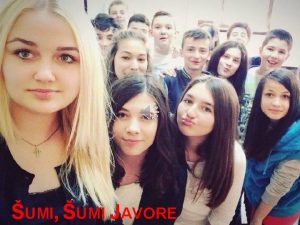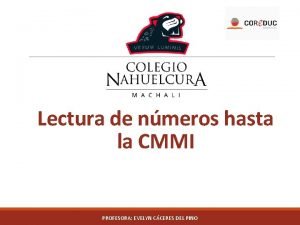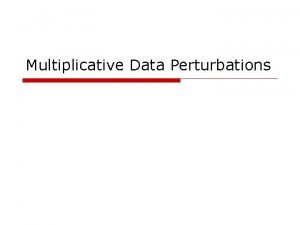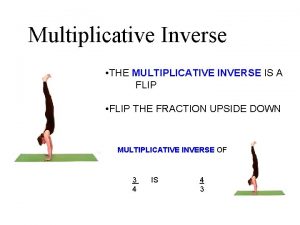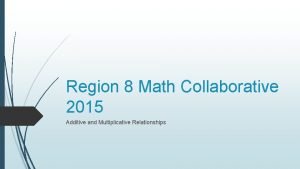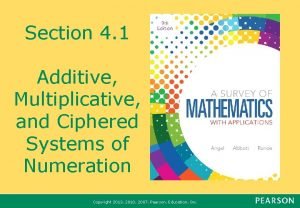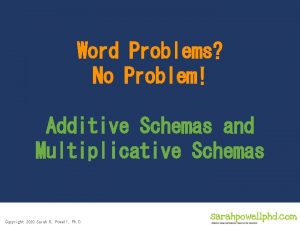FROM ADDITIVE TO MULTIPLICATIVE REASONING UMI JANUARY 20










- Slides: 10

FROM ADDITIVE TO MULTIPLICATIVE REASONING UMI JANUARY 20, 2018

PROBLEM SOLVING • Sam the snake is 4 feet long. When he is fully grown, he will be 8 feet long. Sally the snake is 5 feet long. When she is fully grown, she will be 9 feet long. Which snake is closer to being fully grown. Explain how you know.

DIRECTIONS • Work the problem on your own. • Share in your group. • Analyze the student reasoning. Which student is correct? Why? • Share out.

TYPES OF REASONING USED • They are both the same distance to being fully grown. Although Sam is only 4 feet long and will be 8 feet long, Sally is 5 feet long and will be 9 feet. No matter how you look at it, they are both 4 feet away from being fully grown. • Additive Reasoning • Sally is closer to being fully grown because she is 5 feet long and will only get to 9 feet. This means she is over half of her total growth. Although Sam will only get to be 8 feet, he is exactly halfway of his total growth, and this means that Sally is further along in in growth than Sam. • Multiplicative Reasoning

SUCCESS RATES FROM SAMPLE STUDENTS • 5 th Grade – 11% • 6 th Grade – 27% • 7 th Grade 40% • 8 th Grade – 52%

HOW DO WE HELP OUR STUDENTS GO FROM ADDITIVE TO MULTIPLICATIVE REASONING? • Jigsaw an article from Teaching Children Mathematics, Developing Multiplicative Thinking from Additive Reasoning, September 2013. – Additive Strategies – Unit Relationships – Composite Units – Multiplicative Reasoning

JIGSAW INSTRUCTIONS • Supplies - Article sections for each group (Full article is on our Website. • Groups of 4 will review their assigned section and become an expert on it. (10 minutes) • Divide into new mixed groups of 4 to share your section. • Share your section with the group in this order: (15 minutes) – Additive Strategies – Unit Relationships – Composite Units – Multiplicative Reasoning

STRATEGIES TO HELP STUDENTS DEVELOP MULTIPLICATIVE REASONING • Present problems that guide students toward thinking • Choose numbers carefully so that the students can find a relationship. • Allow students to use different strategies to help them distinguish between methods that do and do not work. • Present students with different types of problems. (Not all multiples like 6/30 = x/40)

NEXT STEPS: STUDENT WORK • Analyze the student work on the multiplicative reasoning problem. – What is the student not understanding? – What would be your next steps with this student? – Why?

WHAT TOPICS PERPLEX YOU?




